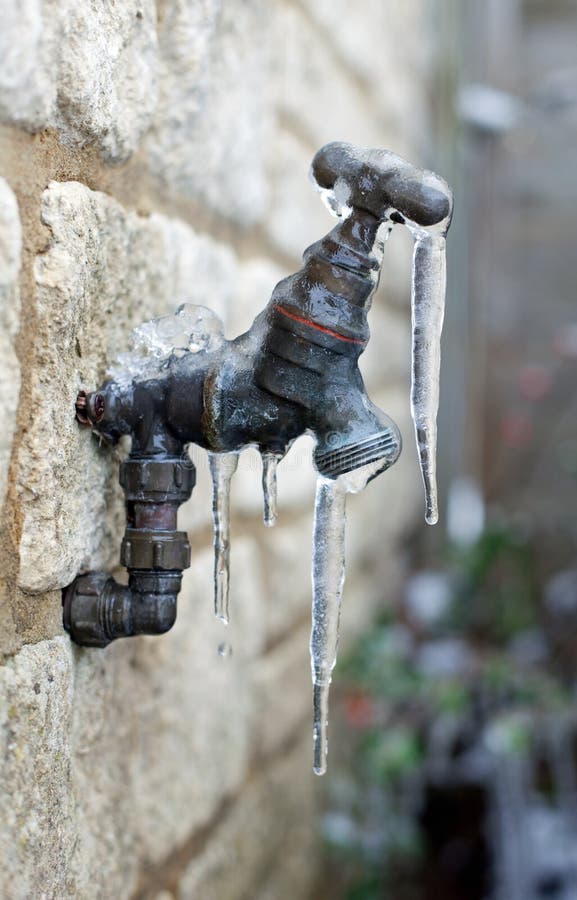We have noticed this great article relating to How to prepare your home plumbing for winter weather below on the web and felt it made sense to talk about it with you in this article.
:strip_icc()/snow-outdoor-faucet-pipes-4af65d1e5e904fb1aa7bf74071fe5d89.jpg)
Winter can ruin your plumbing, especially by freezing pipelines. Below's exactly how to avoid it from occurring and what to do if it does.
Introduction
As temperature levels decrease, the danger of frozen pipelines rises, potentially resulting in costly repair work and water damage. Recognizing exactly how to prevent icy pipes is essential for homeowners in cool climates.
Avoidance Tips
Shielding prone pipes
Cover pipelines in insulation sleeves or utilize warmth tape to safeguard them from freezing temperature levels. Focus on pipelines in unheated or exterior areas of the home.
Heating methods
Maintain interior spaces appropriately heated, particularly locations with plumbing. Open cupboard doors to enable cozy air to flow around pipes under sinks.
How to determine icy pipelines
Try to find reduced water flow from faucets, uncommon smells or noises from pipelines, and visible frost on exposed pipelines.
Long-Term Solutions
Architectural modifications
Consider rerouting pipes far from exterior walls or unheated areas. Add additional insulation to attic rooms, basements, and crawl spaces.
Updating insulation
Purchase top quality insulation for pipelines, attics, and walls. Appropriate insulation helps keep consistent temperature levels and decreases the threat of frozen pipelines.
Shielding Exterior Pipes
Yard tubes and outdoor faucets
Separate and drain yard hose pipes prior to winter season. Mount frost-proof spigots or cover outside taps with shielded caps.
Understanding Frozen Pipelines
What creates pipes to freeze?
Pipes ice up when revealed to temperatures below 32 ° F (0 ° C) for prolonged periods. As water inside the pipelines freezes, it expands, putting pressure on the pipe walls and potentially triggering them to rupture.
Dangers and damages
Frozen pipes can result in water disturbances, residential property damages, and costly repair work. Burst pipelines can flooding homes and trigger comprehensive structural damage.
Signs of Frozen Piping
Recognizing frozen pipes early can stop them from rupturing.
What to Do If Your Pipes Freeze
Immediate activities to take
If you presume frozen pipelines, maintain faucets open up to ease pressure as the ice thaws. Utilize a hairdryer or towels taken in hot water to thaw pipelines gradually.
Conclusion
Stopping frozen pipelines needs proactive procedures and quick actions. By understanding the causes, indicators, and preventive measures, home owners can protect their pipes during winter.
6 Proven Ways to Prevent Frozen Pipes and Protect Your Home
Disconnect and Drain Garden Hoses
Before winter arrives, start by disconnecting your garden hoses and draining any remaining water. Close the shut-off valves that supply outdoor hose bibs and leave the outdoor faucet open to allow any residual water to drain. For extra protection, consider using faucet covers throughout the colder months. It’s also important to drain water from any sprinkler supply lines following the manufacturer’s directions.
Insulate Exposed Pipes
Insulating your pipes is an effective way to prevent freezing. Pipe insulation is readily available at home improvement stores and is relatively inexpensive. Pay close attention to pipes in unheated areas such as the attic, basement, crawl spaces, or garage. Apply foam insulation generously to create a buffer against the cold. You can also wrap your pipes in heat tape or thermostat-controlled heat cables for added warmth.
Seal Air Leaks
Inspect your home for any cracks or openings that could let in cold air. Seal any holes around the piping in interior or exterior walls, as well as the sill plates where your home rests on its foundation. Additionally, make sure to keep your garage door closed unless you’re entering or exiting. Leaving it open creates a significant air leak that can lead to frozen pipes.
Allow Warm Air Circulation
During cold snaps, it’s essential to allow warm air to circulate evenly throughout your home. Leave interior doors ajar to promote better airflow. Open kitchen and bathroom cabinets to help distribute heat consistently around the rooms. If you have small children or pets, be sure to remove any household chemicals or potentially harmful cleaners from open cabinets for safety.
Let Faucets Drip
A small trickle of water can make a big difference in preventing ice formation inside your pipes. When temperatures drop significantly, start a drip of water from all faucets served by exposed pipes. This continuous flow helps prevent the water from freezing. Additionally, running a few faucets slightly can relieve pressure inside the pipes, reducing the chances of a rupture if the water inside does freeze.
https://choateshvac.com/6-proven-ways-to-prevent-frozen-pipes-and-protect-your-home/

Do you like reading up on 6 Ways to Prevent Frozen Pipes? Give a short review below. We would be pleased to know your feelings about this posting. Hoping to see you back again before long. Do you know another individual who is excited by the topic? Do not hesitate to promote it. Thanks so much for going through it.
Book With Us Today!